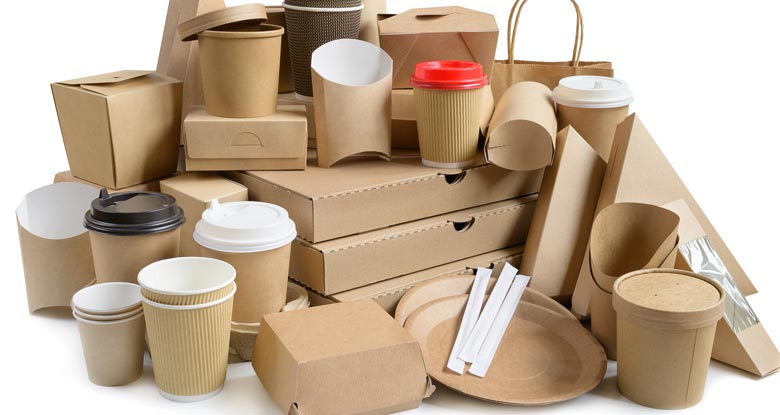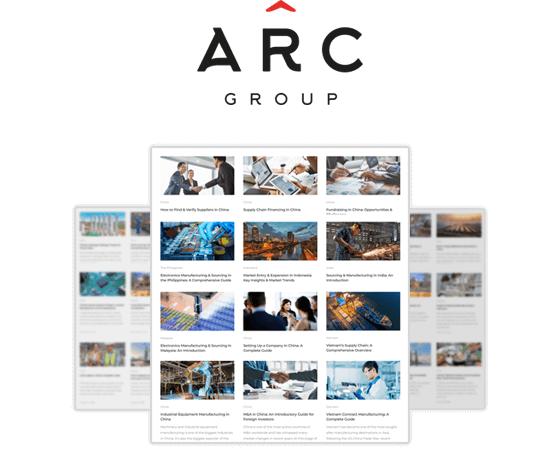
Vietnam is a major exporter of packaging products, and the industry has been developing for decades. Nowadays, you can find everything from multinationals to SMEs who have chosen Vietnam as their primary manufacturing location for packaging.
There is a handful of reasons for this that we will cover later in this article. We will also review what materials are used and what types of packaging are produced. Finally, we touch on the production of eco-friendly packaging and whether this is available.
Vietnam’s Packaging Industry
The packaging industry is one of the fastest-growing in Vietnam with a growth rate of 15% to 20% in the coming years. Currently, there are over 900 factories that operate in the industry, and where around 70% are based in the Southern region, primarily in Ho Chi Minh City, Binh Duong, and Dong Nai.
Seen as an auxiliary industry, the strong development is driven by the growth of other industries such as food and beverage, pharmaceutical, industrial production, and export activities.
Packaging producers in Vietnam mostly operate in the eCommerce, healthcare, food, consumer goods, and electronics industries. Among them, the pharmaceutical and healthcare sector makes up 5% to 10% of the demand, the food sector 30% to 50%, and the electronics sector around 5% to 10%.
Packaging is indeed a broad industry, and we can therefore categorize it based on the sectors it serves and the materials used. Looking at materials, there is a wide range of options used, including paper, plastic, metal, glass, wood, foam, leather, and textiles. With that said, plastic packaging, paper, and cardboard packaging account for over 80% of the total sales revenues.
We see that the sectors and materials used strongly correlate. TetraPak, for example, is one of the biggest food packaging producers globally with a major facility in Binh Duong province, bordering Ho Chi Minh City. The main materials used include papers and plastics.
Major importers of packaging from Vietnam
The main importers of Vietnam-made packaging products are the U.S (60%) and Japan (15%). In 2020, the country even surpassed the U.S to become the third-biggest packing bags exporter with 517 million USD in export value. Looking at the packaging industry, Vietnam exported over 1.7 billion USD, being a global leader.
It is predicted that in the upcoming years the EU and China will also become big customers of Vietnamese manufacturers, as China is having a supply shortage with paper packaging products, and the EU will boost imports from Vietnam when the free trade agreement of the EU and Vietnam (EVFTA) has come into effect.
Some big global suppliers of packaging products have set up their production in Vietnam to take advantage of the low labor costs, various free trade agreements, and supporting policies from the Government. Tetra Pak of Sweden, Bandai Namco and Marubeni of Japan, Box-Pak of Malaysia, and Lee & Man of China invest millions of dollars in the manufacturing site in Vietnam.
What packaging is produced in Vietnam?
A wide range of packaging products can be sourced in Vietnam with the major materials being paper and plastic. In this article, we will pick out and explain some most outstanding packaging products that Vietnamese manufacturers have expertise in.
Paper packaging
Carton boxes of all sizes can be manufactured in Vietnam, especially carton folding boxes used for the shipment of products. Currently, Vietnam exports packaging paper to 33 countries and 5 continents, of which Asia accounts for the largest proportion 98.9%, followed by Africa at 0.5%, Australia at 0.4%, and America and Europe at 0.2%.
Our experience of working with manufacturers shows that the carton box suppliers have no problems in working with the size and folding requirements of the customers. They can either suggest the box sizes available or cut and fold the boxes on demand.
Besides carton boxes used in transportation, the manufacturers also specialize in kraft boxes and bags for food storage; corrugated boxes used for home appliances and medical equipment packaging. From basic brown boxes to luxury and printed boxes for gift purposes, you will find it easy when searching for suppliers in Vietnam.
Plastic packaging
As an agriculture-based economy, Vietnam has expertise in making PP woven bags for agricultural products such as rice, animal feed, sugar, pet food, and chemical. It is also one of the main exporters of those products, therefore producers clearly understand the foreign trade packaging standards. Manufacturers of PP woven bags with well-certified factories export their bags to the U.S, Canada, Australia, New Zealand, Southeast Asia, and the EU.
Along with polypropylene (PP) woven bags, the PP non-woven bags often used for grocery shopping can be sourced widely in Vietnam. The main importers of Vietnam-made PP non-woven bags are the US, Japan, South Korea, and the EU.
If you visit malls or supermarkets in these markets, there is a high chance that the bags are made in Vietnam.
Plastic trays for food, pharmaceutical, and electronics products are available as well. The producers have been established for a long time and are experienced in exporting.
You may come across many foreign-owned companies in Vietnam for plastic products. The multi-layered flexible packaging segment is dominated by companies such as Tapack (South Korea), Batico (Thailand), Huhtamaki, J.S Packaging, and Fuji Seal (Japan), while local manufacturers led the mono-layered flexible packaging.
The reason for such differences is that the foreign ones have better technology, and better factories with certifications to process the layers and meet the standards of demanding products.
Although Vietnam cannot offer the level of diversity as China, it does boast a higher level of diversity than some other alternative sourcing destinations, such as Bangladesh and Cambodia for plastic products.
Tin cans and tin boxes
Tin was one of the earliest metals to be extracted in Vietnam. Tin cans and tin boxes are used for the food and beverage, paint, stationery, chemicals, and cosmetics industries. The producers can offer different shapes, colors, patterns, and prints on the cans and boxes.
Having said that, most manufacturers focus on small and medium-sized boxes for household use. If the size of the products is big and has more complex designs, it will take more time to find suitable suppliers.
Benefits of Sourcing Packaging in Vietnam
Vietnam has an established packaging industry and suppliers are experienced in both the manufacturing and export activities. Other benefits of choosing Vietnam for manufacturing activities are its many free trade agreements, political stability, and low labor costs.
From 2022 and beyond, importers of packaging for agriculture, forestry, fishery, and the processing industry will benefit further as the following trade agreements are introduced:
- European Union–Vietnam Free Trade Agreement (EVFTA): Vietnam’s free trade agreement with the EU
- The Comprehensive and Progressive Agreement for Trans-Pacific Partnership (CPTPP): A trade agreement between Vietnam and Australia, Brunei, Canada, Chile, Japan, Malaysia, Mexico, New Zealand, Peru, and Singapore
- The Regional Comprehensive Economic Partnership (RCEP): A free trade agreement between Vietnam and Australia, Brunei, Cambodia, China, Indonesia, Japan, South Korea, Laos, Malaysia, Myanmar, New Zealand, the Philippines, Singapore, and Thailand
As a result, import duties will either be reduced or removed when importing packaging from Vietnam from any of these countries. As a result, we predict that suppliers will expand production to meet the increased demand and more investments will be allocated to the packaging industry.
Whether you are looking for suppliers of packaging products or investment opportunities, Vietnam is one of the most interesting markets to explore at the moment.
What are some challenges of sourcing packaging in Vietnam?
There are also challenges of sourcing packaging in Vietnam to be considered. One of the most outspoken ones is the low diversity of product designs and the comparatively unmatured supply chain.
It’s undeniable that Vietnamese suppliers have difficulties in competing with the Chinese on the range of product designs. The products from Vietnam are often simpler and use basic colors.
Complex designs might require the development of new tools or molds, the product price will increase accordingly. In China, on the other hand, factories produce packaging in large volumes to cover tooling costs.
Besides, raw materials for packaging products are mainly imported from China and account for 60% – 70% of the costs. Vietnamese suppliers still rely much on the Chinese supply market.
Like many other industries, the Covid-19 pandemic resulted in supply chain disruptions with lower supplies, higher prices, and lower margins for Vietnamese suppliers.
Eco-Friendly Packaging Production in Vietnam
Vietnam is experiencing a ‘green consumer boom’ as people become aware of the problems with single-use plastic. Increasingly more companies seek to procure more environmental-friendly packaging materials, based on consumer demands.
Aside from paper-based products, Vietnam has few eco-friendly packaging producers.
Three types of eco-friendly bags that can replace pure plastic bags are oxo-biodegradable, biodegradable, and compostable bags. Here, only the biodegradable type can be sourced in Vietnam.
The difference from plastic bags is that instead of using 100% plastic beads, biodegradable bags use 50% plastic beads, 40% tapioca starch or wheat starch, and 10% organic supporting impurities.
However, only a few Vietnamese suppliers supply these products currently and they have not been able to scale up and serve the export market in larger numbers yet.
Summary
The packaging manufacturing industry is one of the fastest-growing in Vietnam, averaging a growth rate of 15% to 20% yearly. Along with its free trade agreements, low labor costs, and large labor pool, the worth has been active for decades. This has allowed Vietnam to build up a highly capable supplier pool.
Looking at industries, the packaging is primarily produced for the eCommerce, healthcare, food, consumer goods, and electronics industries. Materials mainly used include paper, plastic, and cardboard, serving the sectors mentioned.
Even if there are many benefits of sourcing packaging in Vietnam, it also comes with some drawbacks. The country relies heavily on imports from China and its supply chain is less developed. As investments increase and the industry continues to grow, its reliance on imports is predicted to decrease, at the same time as its supply chain develops.
Read more about our market entry services or other consulting capabilities.
The insights provided in this article are for general informational purposes only and do not constitute financial advice. We do not warrant the reliability, suitability, or correctness of the content. Readers are advised to conduct independent research and consult with a qualified financial advisor before making any investment decisions. Investing in financial markets carries risks, including the risk of loss of principal. Past performance does not guarantee future results.
The views expressed herein are those of the author(s) and do not necessarily reflect the company's official policy. We disclaim any liability for any loss or damage arising from the use of or reliance on this article or its content. ARC Group relies on reliable sources, data, and individuals for its analysis, but accuracy cannot be guaranteed. Forward-looking information is based on subjective judgments about the future and should be used cautiously. We cannot guarantee the fulfillment of forecasts and forward-looking estimates. Any investment decisions based on our information should be independently made by the investor.
Readers are encouraged to assess their financial situation, risk tolerance, and investment objectives before making any financial decisions, seeking professional advice as needed.



